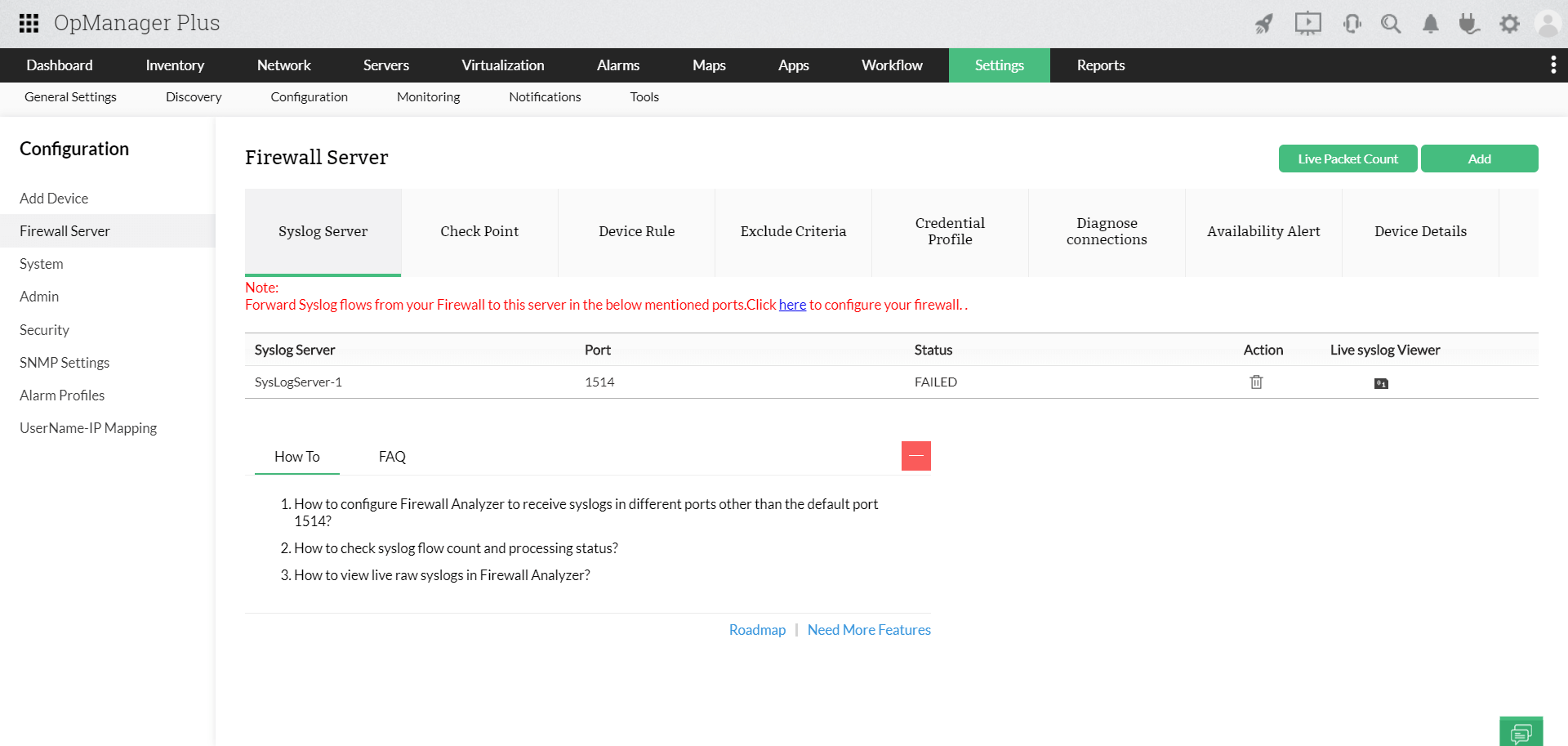Data center infrastructure management (DCIM)
Data center infrastructure management solutions help admins to effortlessly observe, manage the utilization and consumption of all data center endpoints such as routers, switches, servers, storage components, etc. In addition to providing data about performance and other critical metrics of the devices, DCIM software also allows admins to maintain constant uptime, reduce overhead costs, and enhance performance. A research says, 75 percent of data center managers installed DCIM tool to cut costs. This paves the way for constant business growth.
Challenges in data center infrastructure management
Data centers are tasked with collecting, storing, and processing large amounts of data along with backup and recovery and running business operations; for this reason, it's essential to monitor a data center environment correctly, a complicated task in itself. The tasks within data center infrastructure management comes with its own list of challenges.
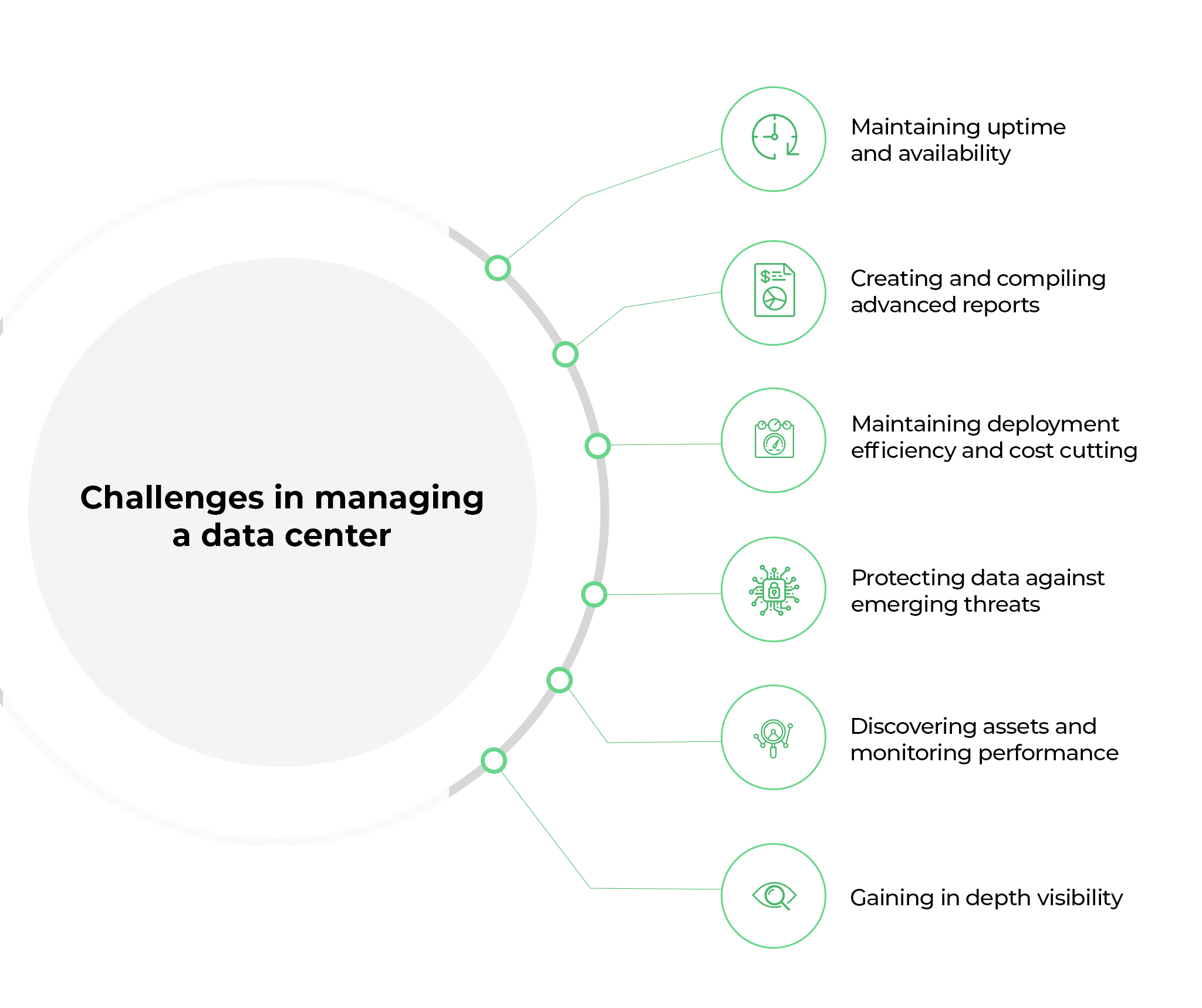
- Maintaining availability and uptime:
Ensuring the availability and uptime of your infrastructure components is at the heart and soul DCIM solutions. For a data center to experience infrastructure downtime is a revenue loss, and it should be quickly identified and acted upon to ensure maximum uptime.
- Discovering assets and monitoring performance:
Any new device waiting to be added to a network within your data center should be quickly discovered, accurately identified, and its relationship and interdependencies understood. An inventory of various components connected to your data center infrastructure should be maintained for easier asset tracking.
Monitoring the performance of the data center components is a crucial activity for any data center manager. The various parameters of your network devices such as availability, CPU utilization, disc utilization, memory consumption, etc. should be accurately monitored for enhanced DCIM services.
- Protecting data against emerging threats:
Data centers (such as colocation data centers) contain and manage the IT infrastructure of a large number of clients, making them viable targets for cyberattacks. To combat this, the DCIM platform should have a robust security system in place 24x7 or risk a breach.
Threats can also occur in the form of misconfigurations resulting from human error, attacks from rogue devices, unauthorized access of data center elements, etc.
- Maintaining deployment efficiency:
IT admins nowadays over-provision resources to avoid downtime, which can result in resources being wasted and the under-utilization of infrastructure components. More importance should be given to capacity planning, which begins with identifying all the under-utilized or idle resources. By shutting down or diverting the load to these resources with the help of the DCIM tool, you can save on energy, cooling, and space occupied.
Data centers contain finite space, and to make the most out of it, a careful plan is needed to better provision resources for maximum utilization of floor space and rack density.
- Creating and compiling advanced reports:
As data centers gather enormous amounts of data on a daily basis, finding the relevant data from this data pile is a challenging task. This is where advanced reports such as forecast reports, capacity utilization reports, etc. come into play. You should be able to quickly create sophisticated yet accurate reports containing the exact information you are looking for. These reports play a crucial role in presenting data to upper management for forecast management, and greatly assist in making business expansion measures.
- Gaining in-depth visibility:
One of the biggest challenges data centers face is addressing visibility blind spots. Availability and health are not the only aspects of an infrastructure component that demand visibility; changes such as device configurations, updates on scheduled downtime, notifications when your devices exceed their bandwidth allocation, etc. also translate as visibility, and to better manage your data center, it's imperative that you are presented all this information on a single screen for easier understanding.
OpManager Plus: Scalable, centralized DCIM software
Maximize your data center performance and reduce overheads!
- Monitor availability and performance in real time
- Manage device health and energy consumption proactively
- Forecast and plan for future growth with advanced reports
OpManager Plus with its integrated full-stack observability capabilities, empowers data center managers across the world manage all physical, virtual, and logical data center assets; improve data center design; plan and provision new equipment; increase operational efficiency; plan future growth while maximizing utilization of existing resources to help maintain uptime; boost productivity; and drive efficiency.
Besides being an effective network observability solution, OpManager Plus is also a very capable data center infrastructure management tool.
1. Comprehensive monitoring and management of network devices:
- Availability and health
OpManager Plus, a powerful and real-time DCIM tool allows you to observe the availability and health of your network devices from a unified point of view using dashboard and network operations center (NOC) views. Availability is measured using an Internet Control Message Protocol (ICMP) ping or telnet if the device is in a demilitarized zone (DMZ).
- Performance
OpManager Plus' DCIM solution ensures all your device metrics are monitored by offering performance monitoring support for over 8,000 devices and more than 200 performance metrics.
- Service monitoring
OpManager Plus offers agent-less service monitoring, and in case of an outage, automatically triggers remedial measures such as restarting the service, rebooting the system, or raising alerts.
- Process monitoring
OpManager Plus supports all Windows and Unix processes out of the box: Windows Management Instrumentation (WMI) for Windows, command-line interface (CLI) for Unix, and Simple Network Management Protocol (SNMP) for servers and domain controllers.
- Bandwidth
Allocating sufficient bandwidth will ensure critical applications and servers perform properly, and business operations function smoothly. Concurrently, it's important to analyze traffic data for insights into anomaly detection, traffic shaping, etc. OpManager Plus, a holistic DCIM tool helps monitor the various metrics of over 230 interfaces right out of the box.
- Configuration
Overlooking a minor misconfiguration can lead to cascading effect, ultimately affecting the performance of your infrastructure and impacting business. OpManager Plus ensures configuration mismanagement is prevented by setting rule-based access, configuring backups, tracking user-based activity, and employing a fail-safe—an automatic backup in case a device outage occurs.
- Storage devices monitoring
OpManager provides in-depth storage monitoring services for Redundant Array of Independent Disks (RAIDs), Tape Libraries in Serial Attached SCSI (SAS), Network Attached Storage (NAS), Fibre Channel (FC), or Storage Area Network (SAN) on a visual platform for quicker storage issue identification.
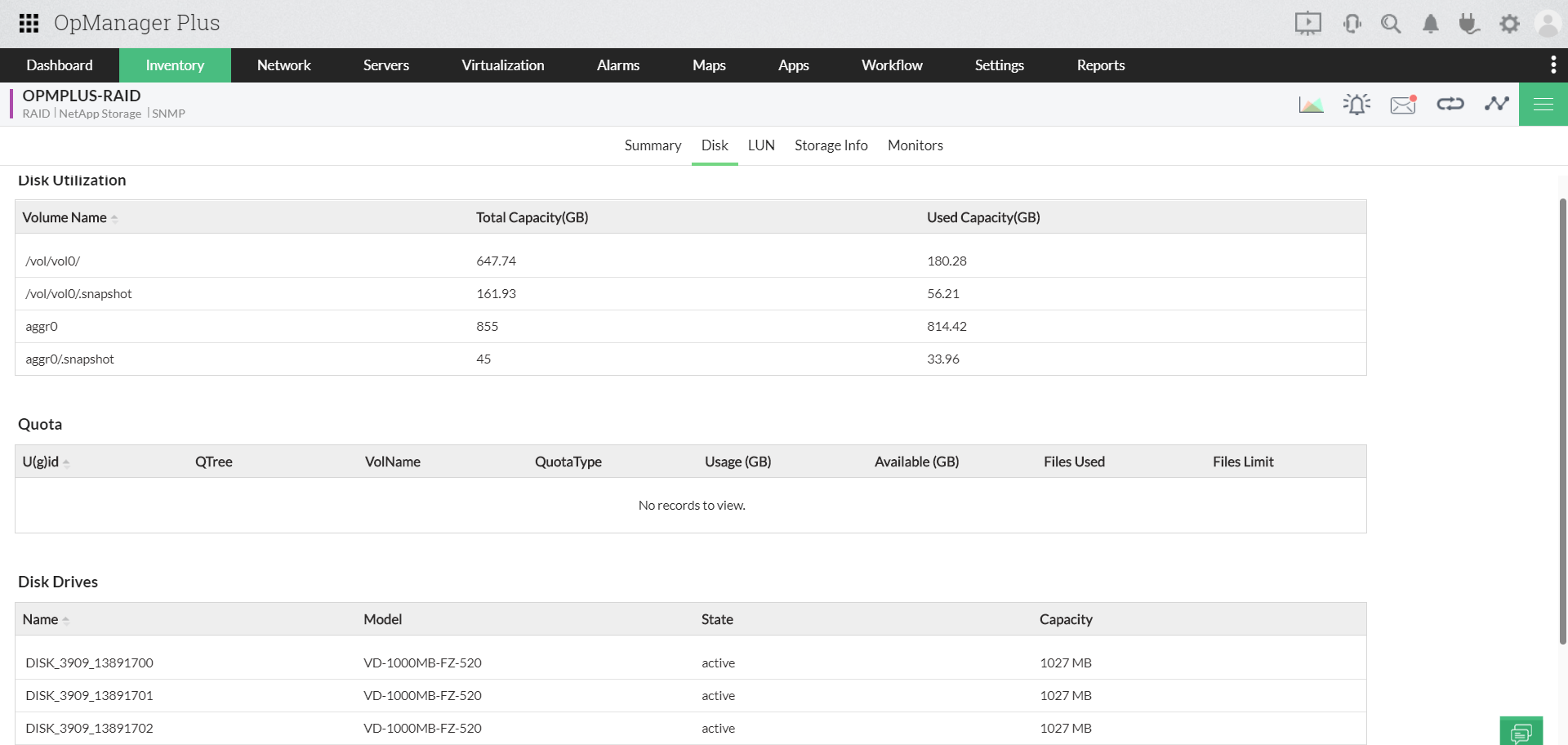
2. Monitor data center devices in real-time on a detailed visual interface:
OpManager Plus, the best DCIM software creates a dynamic visual representation of the elements present in your data center. It offers real-time information on the health and availability of your devices using color codes for easier understanding.
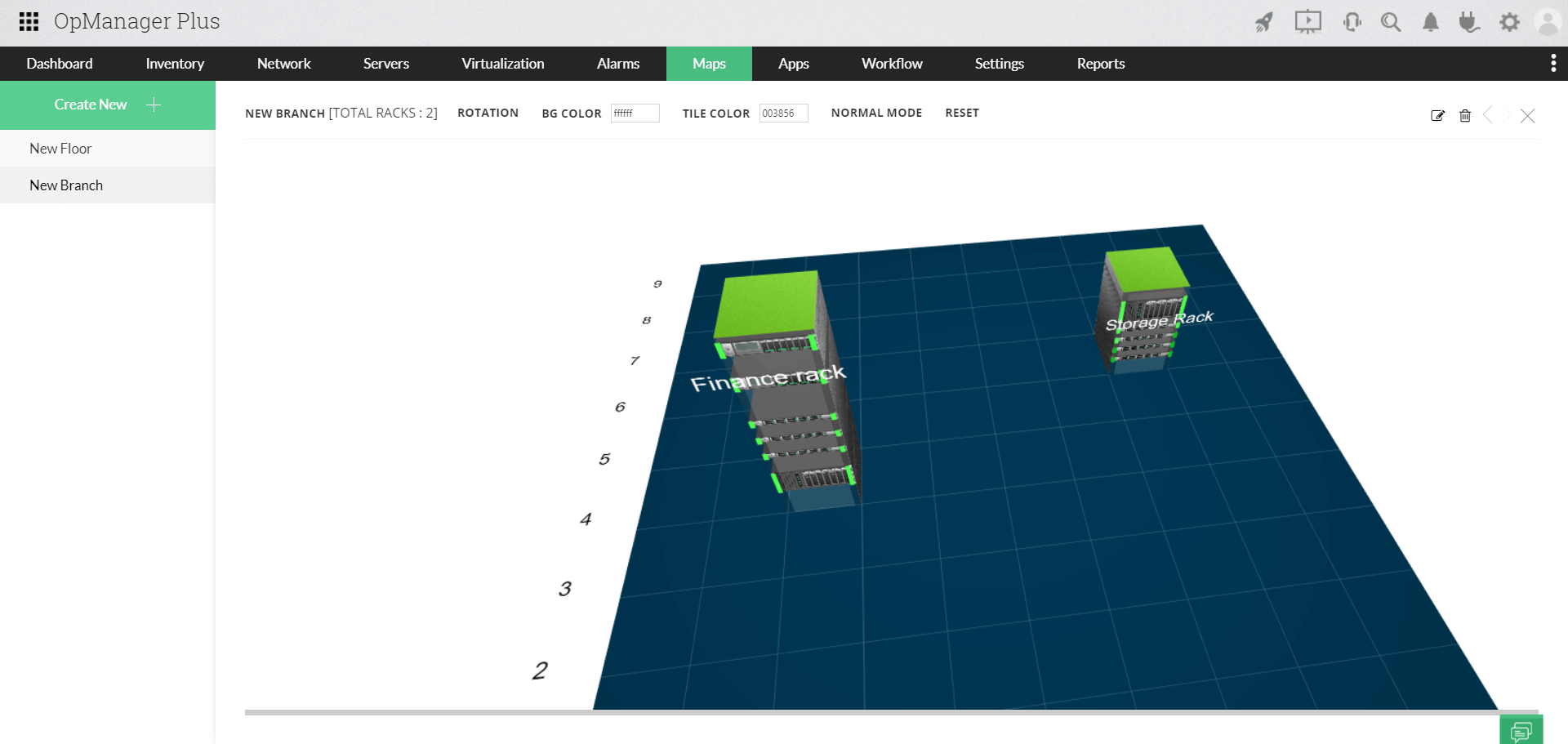
3. Temperature and energy consumption management:
With OpManager Plus, an efficient IT infrastructure monitoring tool, you can monitor the temperature and energy consumption of your devices in real-time. Various factors such as CPU health, CPU temperature, and all attributes of hardware health such as voltage, power consumed, or fan speed can be accurately monitored.
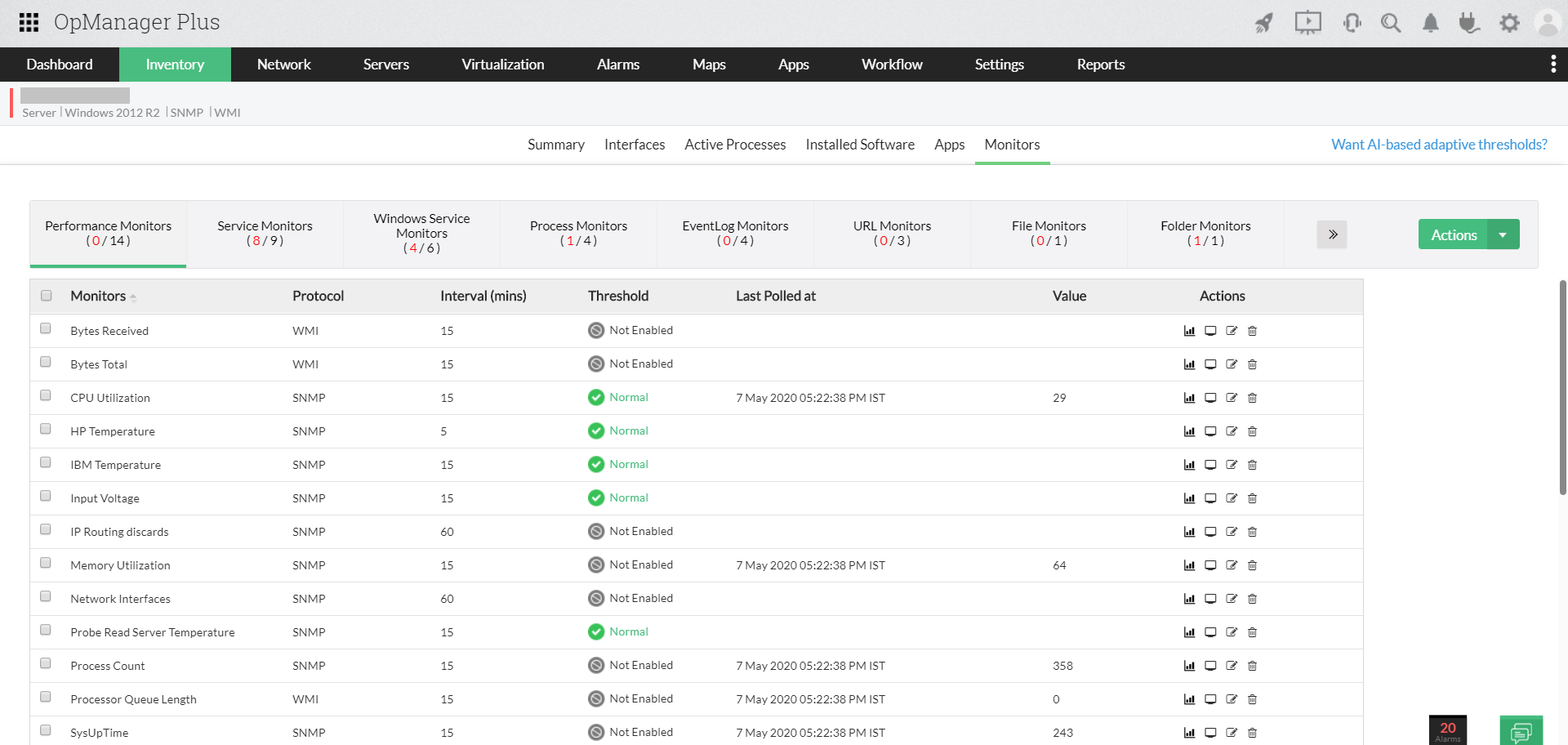
4. Extensive security and threat detection:
OpManager Plus, an efficient DCIM software offers rule-based firewall analysis that can perform an endless list of security functions such as security compliance, user-based-access to limit employees from accessing all parts of your data center, log management, the ability to scrutinize real-time VPN data, etc. It also guarantees security by allowing you to monitor the bandwidth of your devices to identify suspicious increased activity in bandwidth usage, and restrict rogue IP addresses from accessing your network.
